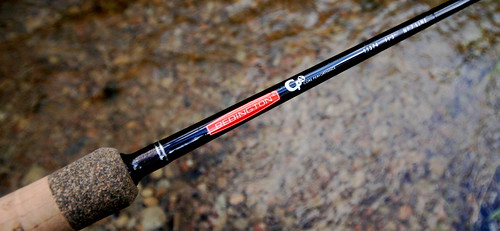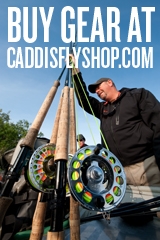“It’s been terrible,” Bob Rees confided, the wind buffeting his cell phone mouthpiece. “Been this way all season,” he added. Bob would know. He’s one of Tillamook’s most established guides, as well as being a vocal advocate for wild fish, clean water, and coastal rainforests. He shares information with several other area guides, including his close friend Chris Vertopulos. If Bob says the fishing is slow, it’s really slow.
We hung up and I stared at the wall, momentarily dazed by the blunt reality that our November chinook run was a no-show. Over the prior two weeks there had been a few “bites” at the Jaws, the Coast Guard Station, the Ghost Hole and Bay City. Those little windows of activity were the exception. The rule was eight hours of cold, wet nothing. Needless to say, it was proving to be a rough year for Tillamook salmon guides.
I decided a long time ago not let bad reports keep me from the river. I have slipped up on occasion, using an extreme weather forecast as an excuse to sleep in, only to kick myself later. Weather fronts often move onshore early or late, or fail to drop as much precipitation as anticipated. Those of us who have fallen prey to overblown hydrological predictions eventually learn a valuable lesson: when in doubt, go to the river. You can always go home. But once you’re sipping coffee in your kitchen at 9am, the day belongs to the smart ones who showed up. Fair weather anglers, or those waiting for good fishing reports, consistently show up a day or two late, only to hear the old refrain: should have been here yesterday!
So Dad and I packed up the fishmobile and headed north for Tillamook. Given the potential for downpours, we went overboard on clothing, with two rain jackets per person, tons of extra fleece layers, socks, gloves, hats, and a wool scarf. There was extra food in the lunch cooler, and a big thermos of hot coffee to warm our insides. We had single-handers, two-handers, spinning rods and baitcasters, a dozen fly boxes and three boxes of tried-and-true Kwikies.
Morning broke quietly in Bay City. The usual salmon-induced fervor was absent from Highway 101. Tillamook Sporting Goods was a ghost town. Dan Dixon, a legendary Spey stick, now managing Tillamook’s premier fishing shop, was glued to the shop TV. Ed Ward was demonstrating the Perry Poke, and Dan was soaking up every bit of it. The store copy of Skagit Master had just arrived, and I could see a fire burning in Dan’s eyes. “Have you been throwing the long rod?” I asked. “Nah,” he said. “There’s nobody to Spey fish with around here.” He passed along what he’d heard from the prior day, and we agreed to swing some flies together come winter.
At Donaldson Bar we wadered up and pushed the drift boat into frosty green water. Conditions were perfect. The shuttle driver moved my truck down to Memaloose Point, committing us to a long float out into the bay. Despite the poor fishing reports, we were virtually guaranteed to run into a batch of fish somewhere in those six or seven miles of river and tidewater.

By noon we hadn’t seen or heard of a fish. At least a dozen other boats reported the same. We snacked a little, then settled into flat-lining k-16s (no wrap) through a beautiful steelhead run, when Dad’s rod flattened. A hot king flashed below, then tumbled across the tailout. Gorgeous buck, sea lice all over its body, about 14 pounds. We celebrated with a fine Ninkasi beer–Total Domination IPA. The day was getting brighter by the minute.
Our now jovial boat floated under Sollie Smith Bridge, considered the last take-out for non-motorized boats, and down toward tidewater. The first two runs were open, and we fished hard without a bite. After that, we found power boats in every spot, some anchored, some back-trolling on kickers. One boat had a fish, the rest were waiting patiently. We pushed on through and enjoyed a scenic tour of the estuary, pulling out in the early afternoon without a sign of fish.
With two hours of daylight remaining, I suggested we head north to drift the lower Kilchis. Dad had never seen a chum salmon, and the Kilchis was running clear enough to resemble a giant aquarium. The Logger Bridge was busy with bank anglers, none of whom had seen or heard of a chinook caught. From there down, we didn’t see a soul. Dad threw spinners as we drifted through the Kilchis floodplain. Some tailouts were thick with chums, others vacant. It was clear that chum numbers were down, along with chinook. Just before dark, as we neared reach of tide, Dad’s spinner stopped and shook violently. He set the hook into a solid chum, and in a few minutes was cradling the painted doe in the shallows. Mission accomplished! We took out in the dark and grabbed some dinner in town.

Our second day dawned in steady rain. We shuffled around, even stopped for breakfast at a greasy spoon, in hopes that we might wait out the worst of it. We talked over our options–the Kilchis, Wilson, Trask, or Nestucca. They all seemed good, but my gut told me the Wilson was still the place to be for chrome kings. This time we launched up river at the Siskeyville ramp, taking out at Donaldson Bar. Again I was confident that we would run into a batch of tide fish somewhere in that gorgeous section of river. But the miles came and went, the rain fell steadily, and the air temperature dropped a couple of degrees. This was tough fishing.
Sometime in the early afternoon we passed the ghostly remains of the Guide Shop. I looked up at the hilltop longingly, hoping to see Toy waving down at me from the deck, dreaming of the sweet smell of burgers on the grill. This was just the kind of day when we would have anchored the boat and run up the hill for beer or a cup of chili. Or one of Toy’s giant chocolate chip cookies. Gary would already be downstairs, warming up after his morning session on the river. Dad and I shook our heads as we remembered so many good times past, then moved somberly down into Widmer Bar.
Curt & Rob Widmer, the famous brothers who brought Hefeweisen to the Northwest, have cousins in Tillamook. The long, beautiful Spey run that carries the family name is some of the finest fly water in the county. Unfortunately, it also gets flogged severely by gear dudes daily. It’s a rare treat to find it vacant and rested, as we found it that day. I suggested we swing Intruders from top to bottom, but the cold was setting into Dad’s legs and arms, so we back-trolled plugs instead. Things were looking grim as we neared the end of the run. I couldn’t believe we had gone so long without a grab. Then Dad hooked up to something solid.
I pulled to shore, threw out the anchor, and watched the battle. The fish shook it’s head back and forth, rising in the water column until it broke the surface, showing broad silver sides. Then she sounded and ran up the river as if she wasn’t hooked. “I think it hung me up on something,” Dad said, worried. I took the rod for a moment, expecting to feel the scratch of mono on rock or wood, but all I felt was a giant fish. “You’re okay, Pop,” I assured him. “A fish like that is going to take some time!”
Cars honked from the road above as drivers caught a glimpse of the action below. And the fish put on quite a show. She made one run to the very tip of the tailout, threatening to leave the pool, then paused and slowly glided up the far side of the river, right back into the deepest part of the hole. “Holy crap, that’s a strong fish!” Dad was all smiles. Then she came to shore, slowly at first, then on her side. “We already have a fish from yesterday,” I reminded him. “What do you think about letting her go?”

“Absolutely, son,” came his reply. Then he stepped over to the fish and put a hand around her peduncle. “Boy, I don’t know. That’s a great fish,” he said, rethinking his position. I reminded him how few fish we had seen over our two days, that this doe was carrying thousands of eggs. No more words were spoken. I took a picture as Dad revived the incredible chinook. Then he released his hold. She hesitated for a moment, looking strong and massive, then shot off into the deep green pool. It occurred to me how rare an experience this had become in recent years. As our runs have declined, I have had to work harder for my fish. Consequently, I have killed most of the bright fish that have come to the boat. I suddenly understood how backwards my thinking had become, realized what I was missing, and remembered how great it feels to see such a fish dart away to safety. That moment awoke something in me that had been sleeping for a long time, and I know I will release a lot more fish in the future…
-RR





















